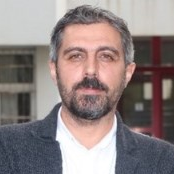Topic Editors






Aquatic Environment Research for Sustainable Development
Topic Information
Dear Colleagues,
The socio-economic development for healthy ecosystems and the Earth’s life survival cannot be achieved without protecting the water resources and related ecosystems. The crucial management of sustainable water resources has been recognized by national and international policies. As an example, a series of guidelines have been issued by the UN Environment Assembly in 2018 to provide countries with rules aimed at integrating and managing aquatic ecosystems. It involves the integration of several competences and areas of study, such as pollution monitoring, biodiversity management, water quality assessment, and treatment. The management of aquatic ecosystems as part of water resource protection and conservation involves specialist areas of study such as environmental flow assessments, pollution control, water treatment, biodiversity management, and many other fields.
All these areas of study need continuous research and the development of observational methods aimed at protecting and conserving aquatic ecosystems from physical, chemical, and biological points of view.
This topic aims to bring together research papers on the study of aquatic ecosystems, including both marine and freshwater environments. The papers will use a range of approaches, including in situ and remote observations, to investigate various physical, chemical, and biological aspects of these ecosystems.
Through this collection, we hope to promote a better understanding of the challenges facing our aquatic ecosystems and how they can be managed sustainably. We invite researchers and practitioners from diverse disciplines to contribute their work to this topic and help advance our knowledge in this critical area.
Dr. Giacomo De Carolis
Dr. Gianfranco Fornaro
Dr. Sedat Gundogdu
Dr. Giovanni Ludeno
Dr. Matteo Postacchini
Dr. Ali Rıza Kosker
Dr. Virginia Zamparelli
Topic Editors
Keywords
- sea
- lakes
- lagoons
- rivers
- environmental monitoring
- integrated assessment and monitoring
- in situ and remote sensing monitoring
- biodiversity; sustainability
- pollution
- alien species
Participating Journals
| Journal Name | Impact Factor | CiteScore | Launched Year | First Decision (median) | APC | |
|---|---|---|---|---|---|---|

Journal of Marine Science and Engineering
|
2.9 | 3.7 | 2013 | 15.4 Days | CHF 2600 | Submit |

Oceans
|
- | - | 2020 | 45.2 Days | CHF 1600 | Submit |

Remote Sensing
|
5.0 | 7.9 | 2009 | 23 Days | CHF 2700 | Submit |

Sustainability
|
3.9 | 5.8 | 2009 | 18.8 Days | CHF 2400 | Submit |

Water
|
3.4 | 5.5 | 2009 | 16.5 Days | CHF 2600 | Submit |

MDPI Topics is cooperating with Preprints.org and has built a direct connection between MDPI journals and Preprints.org. Authors are encouraged to enjoy the benefits by posting a preprint at Preprints.org prior to publication:
- Immediately share your ideas ahead of publication and establish your research priority;
- Protect your idea from being stolen with this time-stamped preprint article;
- Enhance the exposure and impact of your research;
- Receive feedback from your peers in advance;
- Have it indexed in Web of Science (Preprint Citation Index), Google Scholar, Crossref, SHARE, PrePubMed, Scilit and Europe PMC.


